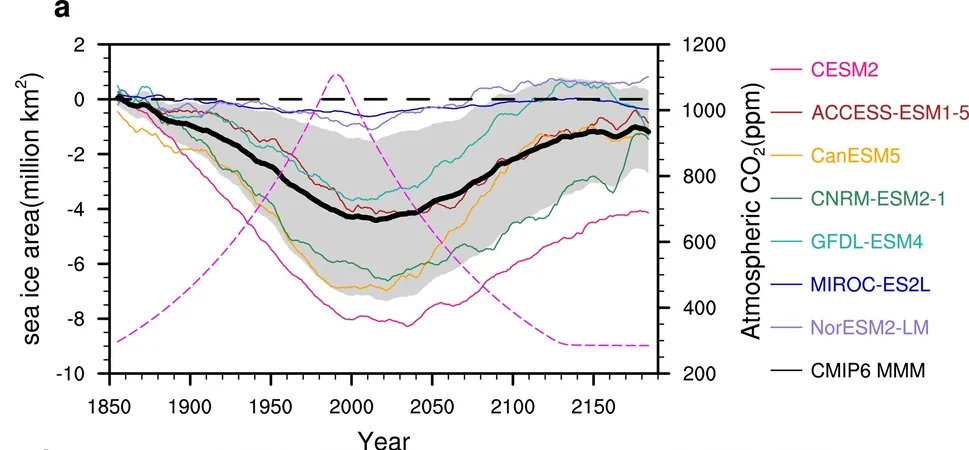
Revolutionary At-Home Test Could Transform Disease Detection
2025-07-09
Author: Sarah
Feeling under the weather with a sore throat and sniffles? If you’ve got concerns about COVID-19 or allergies, the new trend of rapid at-home testing is about to get a serious upgrade!
While these quick tests offer a handy way to check your health, they often lack sensitivity compared to those used in medical offices, risking false negatives even when you’re infected. But a groundbreaking low-cost biosensing technology might change the game by increasing test sensitivity up to a staggering 100 times!
Developed by innovative researchers at the University of California, Berkeley, this advanced test employs a clever combination of the natural 'coffee-ring effect' and cutting-edge AI to detect disease biomarkers in mere minutes.
Kamyar Behrouzi, a recently minted PhD in nanoengineering, explains, 'This straightforward yet powerful technique delivers highly accurate results far quicker than traditional diagnostic methods. Our research opens doors to affordable, accessible diagnostics, especially in areas with limited resources.'
Harnessing the Coffee-Ring Effect for Health
Have you ever noticed how a coffee or wine stain leaves a darker ring at the edge? That’s the mysterious coffee-ring effect at work: as a droplet evaporates, it draws particles toward its edge. Behrouzi discovered this phenomenon while crafting a COVID-19 biosensor back in 2020 and realized it could be harnessed to concentrate viral particles for easier detection.
Using tiny plasmonic nanoparticles, which react uniquely with light, this innovative testing process is set in motion. A user places a droplet with disease-related proteins—whether from a cheek or nasal swab—onto a specially designed membrane. As it dries, any biomarkers gather at the coffee ring's edge.
Next, a second droplet containing engineered nanoparticles is added. If disease markers are present, these nanoparticles will cluster in specific patterns that alter light interaction on the membrane, making the results detectable either by eye or through an AI-powered smartphone app.
Remarkably, results can be delivered in under 12 minutes, and this new technology is 100 times more sensitive at detecting COVID-19 than current testing options.
A Lifesaver in Seconds
Notably, one vital protein detectable with this method is linked to sepsis, a critical condition characterized by a rapid inflammatory response to bacterial infection—a situation especially perilous for adults over 50. Liwei Lin, a standout professor of Mechanical Engineering at UC Berkeley, points out, 'Every moment is essential; traditional culture methods to identify the infection can take days. Our technique may enable identification of sepsis in just 10 to 15 minutes!'
The researchers are actively developing a user-friendly prototype of this home testing kit, akin to the familiar at-home COVID tests, featuring 3D-printed components to streamline sample application.
Reflecting on the pandemic's challenges, Lin states, 'We relied heavily on home tests to determine our COVID-19 status. I envision our technology simplifying regular screenings for conditions like prostate cancer from the comfort of home.'





 Brasil (PT)
Brasil (PT)
 Canada (EN)
Canada (EN)
 Chile (ES)
Chile (ES)
 Česko (CS)
Česko (CS)
 대한민국 (KO)
대한민국 (KO)
 España (ES)
España (ES)
 France (FR)
France (FR)
 Hong Kong (EN)
Hong Kong (EN)
 Italia (IT)
Italia (IT)
 日本 (JA)
日本 (JA)
 Magyarország (HU)
Magyarország (HU)
 Norge (NO)
Norge (NO)
 Polska (PL)
Polska (PL)
 Schweiz (DE)
Schweiz (DE)
 Singapore (EN)
Singapore (EN)
 Sverige (SV)
Sverige (SV)
 Suomi (FI)
Suomi (FI)
 Türkiye (TR)
Türkiye (TR)
 الإمارات العربية المتحدة (AR)
الإمارات العربية المتحدة (AR)